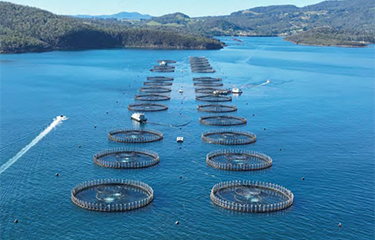A series of documents and email exchanges between the Tasmanian Environment Protection Authority (EPA) and Hobart, Tasmania, Australia-based salmon-farming company Tassal reveal the company was reluctant to release reports about its antibiotic use to the public.
The documents, obtained via public records requests by the Tasmanian Inquirer, show EPA officials wanted to release antibiotic monitoring reports to the public in September 2020, but Tassal objected. The EPA then responded stating intent to publish on 16 November, 2020, and Tassal responded on that date with a revised report omitting some of its antibiotic-treatment information.
Following that, an EPA official suggested in February 2021 the report should be published with the treatment information included. However, no publication took place.
It took until January 2022 for the EPA to follow up with Tassal asking for permission to publish the full report.
Groups opposed to salmon farming in Tasmania, including Marine Protection Tasmania, told the Tasmanian Inquirer they were “not surprised” Tassal wanted to keep the report private.
“Tassal has very good reasons for wanting to keep the public in the dark about their poor animal-husbandry practices and their dumping of tons of antibiotics into our public waterways: it makes them look bad,” Sheenagh Neill, a spokesperson for Marine Protection Tasmania, said. “I’m pleased that the EPA did not pander to Tassal’s wishes.”
However, the fact the report wasn't published does not mean that Tassal’s antibiotics use was a secret. Tassal releases an annual sustainability report that is publicly available containing data on its antibiotics use. Its 2022 report includes information pertaining to a number of antibiotic treatments over an entire production cycle for FY 2018 through FY 2022, along with grams of antibiotics per metric ton (MT) of salmon produced at marine sites and hatcheries for the same period.
In 2020 – the year the report in question was created by the EPA – Tassal’s sustainability report indicated it used 35.36 grams of antibiotics per MT of salmon produced. The report said the company produced 34,396 MT of salmon, meaning the company used just over 1.2 MT of antibiotics – in line with EPA documentation. The company also indicated that it had 0.03 antibiotic treatments per fish over the entire production cycle in 2020 – slightly lower than 0.07 it had in 2019.
The company said its antibiotic use is regularly audited.
“Antibiotic use is audited annually at each of our sites through our third-party sustainability certification audits,” Tassal Group said in its 2022 sustainability report. “The Aquaculture Stewardship Council (ASC) salmon standard includes strict requirements surrounding the use of therapeutants, including prevention of the use of antibiotics listed as critically important for human medicine by the World Health Organisation (WHO).”
Cooke Aquaculture reached an agreement to acquire Tassal in August 2022, an agreement later approved by its shareholders in November 2022. The use of antibiotics by Tassal in January 2022 and previous to that were approved by the company prior to the acquisition.
Photo courtesy of Tassal Group







